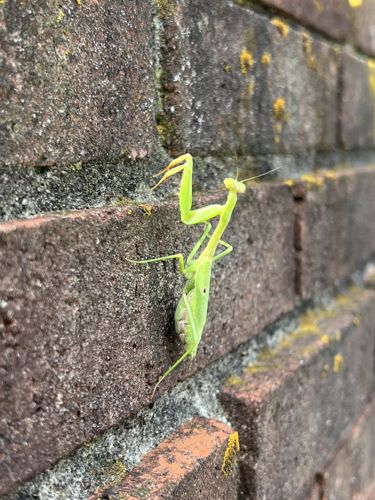Praying Mantis
Scientific Name: Mantis religiosa (or a similar species within Mantodea)
Order & Family: Order Mantodea, Family Mantidae
Size: Typically 2 to 6 inches (5-15 cm) in length, depending on the species.

Natural Habitat
Found in various habitats, including gardens, meadows, grasslands, and areas with shrubs and tall plants. Often camouflaged among foliage.
Diet & Feeding
Carnivorous. They are ambush predators and primarily eat other insects like flies, moths, crickets, butterflies, and grasshoppers. Larger mantises may capture small vertebrates such as lizards, frogs, small birds, and rodents.
Behavior Patterns
Known for their distinctive 'praying' posture with their forelegs held up. They are masters of camouflage, remaining still for long periods to ambush prey. They have excellent vision and can rotate their heads almost 180 degrees. Females are famously known for sometimes consuming the male during or after mating (sexual cannibalism).
Risks & Benefits
No risks to humans; they are not venomous and generally harmless. They are highly beneficial in gardens and agricultural settings as natural pest control, preying on many insects considered pests. They contribute to maintaining ecological balance.
Identified on: 10/7/2025